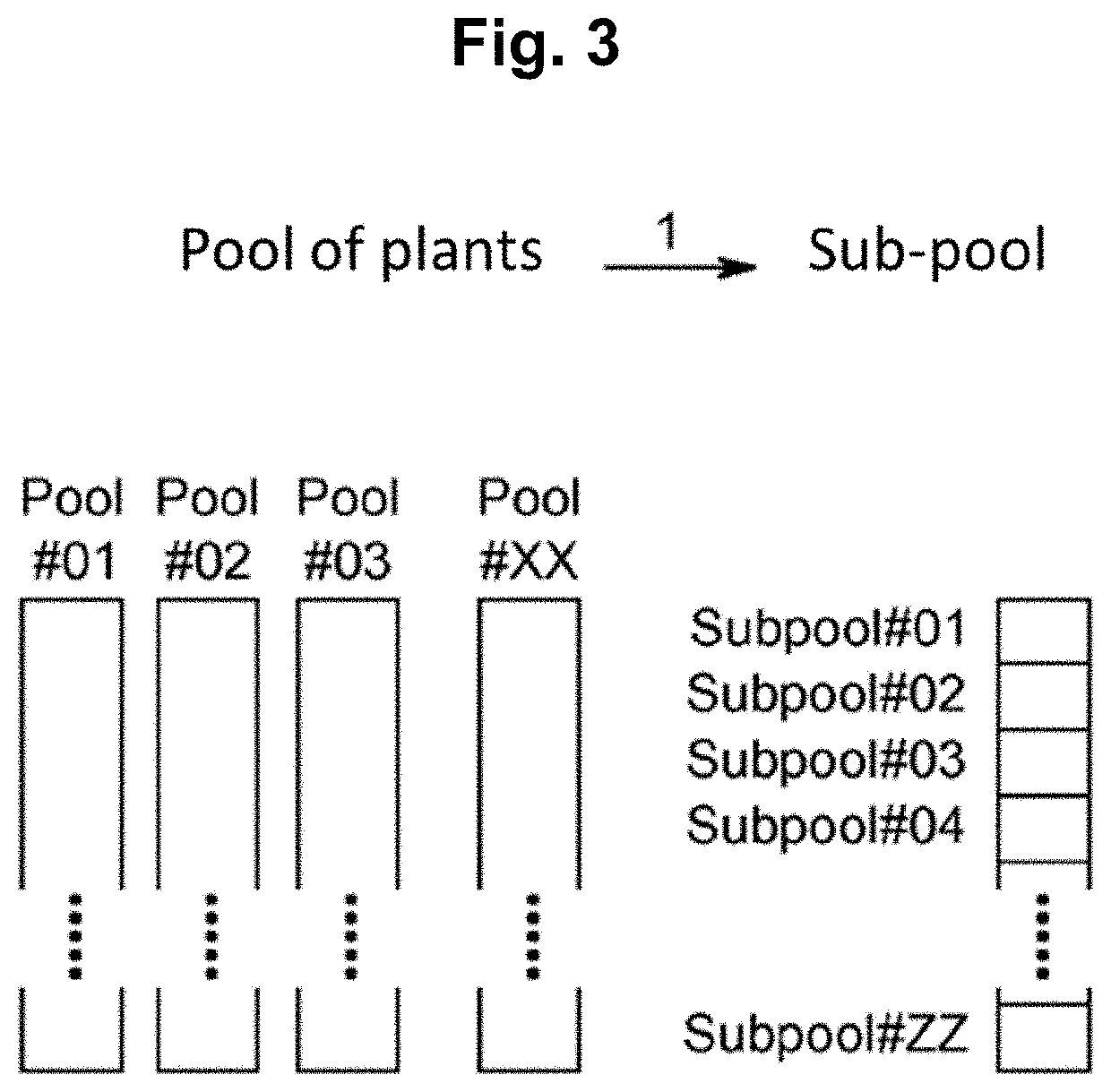Methods for preparing mutant plants or microorganisms
a technology of mutant plants and microorganisms, applied in the field of organism preparation, can solve problems such as inability to backcross to a wild-type or parent, difficulty in viability, and even disadvantageous phenotypes
- Summary
- Abstract
- Description
- Claims
- Application Information
AI Technical Summary
Benefits of technology
Problems solved by technology
Method used
Image
Examples
example 1
ion Density Protocol
[0396]To induce mutations, kernels collected from barley plants were incubated in a solution with the mutagen sodium azide (NaN3), according to the details provided by both Kleinhofs et al. (1978) and those provided in U.S. Pat. No. 7,838,053 with the following changes: The concentration of sodium azide used for the mutagenizes was reduced to 0.3 mM for 2 hours.
[0397]This procedure induces point mutations in the barley grains' genomic DNA (gDNA), typically conferring randomly distributed codons for amino acid substitutions or translational stops of the protein-encoding DNA, i.e. leading to protein changes and truncations in proteins encoded by the mutagenized DNA, respectively. However, the methods of the invention also are useful for producing cereal plants with point mutations in the gDNA of non-protein coding regions, e.g. promoters, terminators and introns.
[0398]15 kg of grains were mutagenized and planted in 30 plots of 7.5 m2 each. The plots were then divid...
example 2
Dependent PCR (rhPCR) to Detect Mutant(s) in a Mutant Library
[0399]RNase H2-dependent PCR (rhPCR) (Dobosy et al., 2011) can improve the specificity of a PCR amplification by utilizing so called ‘blocked primers’. These primers contain a single ribonucleotide residue and a 3′-blocking moiety, which prevents extension of the primer during the PCR. The primers may, however, be activated by RNase H2, which then allows them to be extended during the PCR amplification. RNase H2 cleavage will only occur if the blocked primer binds to a perfect match. Even a mismatch of only a nucleotide change can inhibit cleavage significantly. This means that blocked primers can be designed to specifically block the amplification of unspecific or undesired amplicons, thus providing a very sensitive tool to detect rare, specific nucleotide substitutions. A fluorophore labeled probe, complementary to the 5′-end of the rhPCR primer, enables the quantification of successful primer extension during rhPCR of a...
example 3
quencing of Low Mutagenized Barley Plants
[0404]We have sequenced a library of 6000 barley plants (cv. Quench). The grains were mutated using 0.3 mM sodium azide for 2 hours. A library was constructed consisting of 6000 individual M3 spikes. One grain per spike was utilized for DNA extraction.
[0405]We have amplified a 790 bp fragment of a gene of interest in order to analyse 645 bp of exon 3 of that gene. Amplicons for all 6000 lines were analysed for polymorphisms. We have identified 3 individual mutants within the 645 bp for the 6000 lines. That corresponds to 3 / (645×6000)=1 mutant in every 1.29 million bp corresponding to about 24 non-synonymous mutations in coding regions.
The three mutants corresponded to the following mutation sites:[0406]1. Nucleotide G989>A (cDNA) corresponding to amino acid change S330>N (protein)[0407]2. Nucleotide C1091>T (cDNA) corresponding to amino acid change P364>L (protein)[0408]3. Nucleotide C858>T (cDNA) did not cause an amino acid change
[0409]We ha...
PUM
| Property | Measurement | Unit |
|---|---|---|
| Fraction | aaaaa | aaaaa |
| Fraction | aaaaa | aaaaa |
| Fraction | aaaaa | aaaaa |
Abstract
Description
Claims
Application Information
 Login to View More
Login to View More - R&D
- Intellectual Property
- Life Sciences
- Materials
- Tech Scout
- Unparalleled Data Quality
- Higher Quality Content
- 60% Fewer Hallucinations
Browse by: Latest US Patents, China's latest patents, Technical Efficacy Thesaurus, Application Domain, Technology Topic, Popular Technical Reports.
© 2025 PatSnap. All rights reserved.Legal|Privacy policy|Modern Slavery Act Transparency Statement|Sitemap|About US| Contact US: help@patsnap.com



